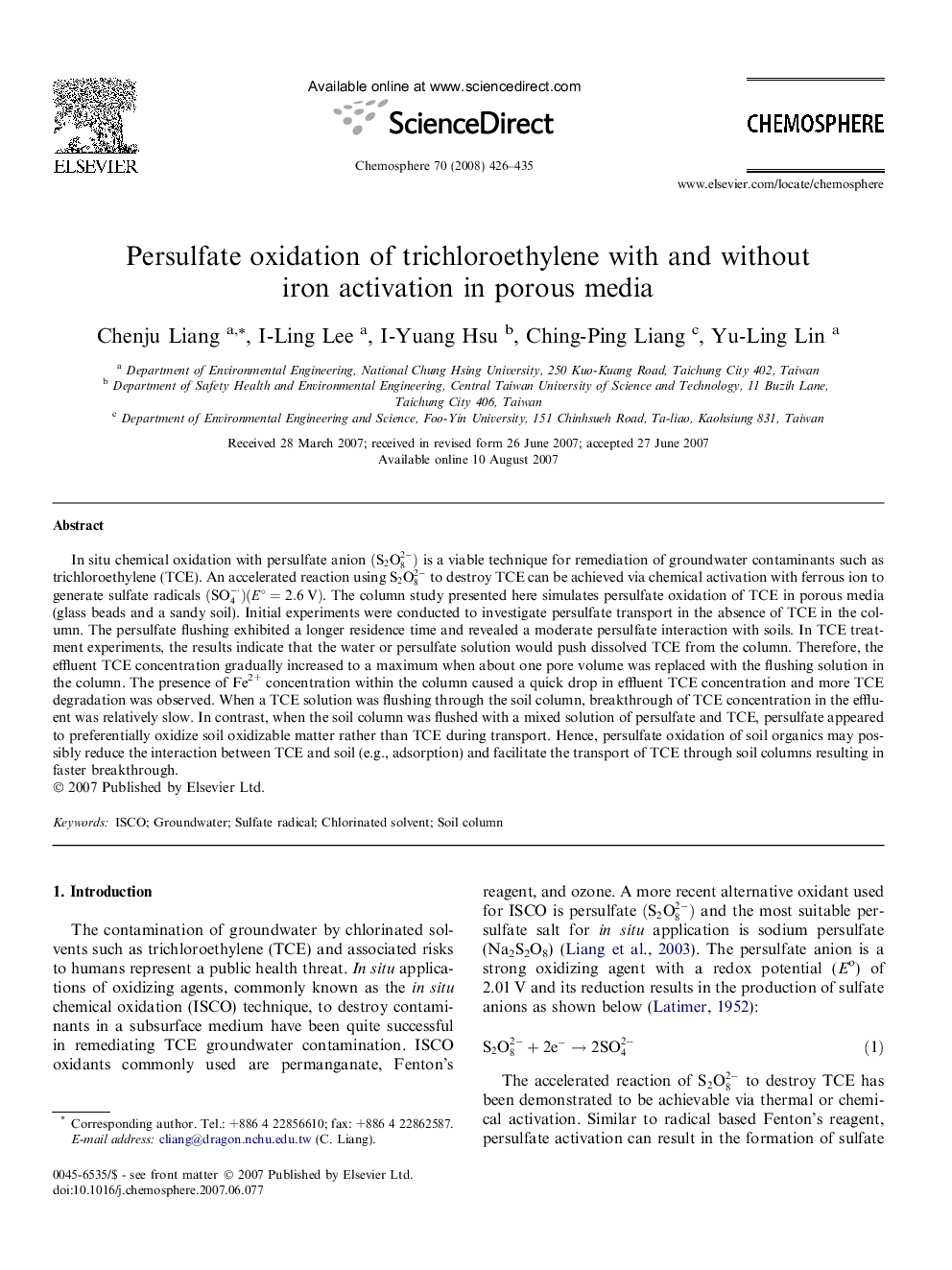| Article ID | Journal | Published Year | Pages | File Type |
|---|---|---|---|---|
| 4414320 | Chemosphere | 2008 | 10 Pages |
In situ chemical oxidation with persulfate anion (S2O82-) is a viable technique for remediation of groundwater contaminants such as trichloroethylene (TCE). An accelerated reaction using S2O82- to destroy TCE can be achieved via chemical activation with ferrous ion to generate sulfate radicals (SO4-·)(E°=2.6V). The column study presented here simulates persulfate oxidation of TCE in porous media (glass beads and a sandy soil). Initial experiments were conducted to investigate persulfate transport in the absence of TCE in the column. The persulfate flushing exhibited a longer residence time and revealed a moderate persulfate interaction with soils. In TCE treatment experiments, the results indicate that the water or persulfate solution would push dissolved TCE from the column. Therefore, the effluent TCE concentration gradually increased to a maximum when about one pore volume was replaced with the flushing solution in the column. The presence of Fe2+ concentration within the column caused a quick drop in effluent TCE concentration and more TCE degradation was observed. When a TCE solution was flushing through the soil column, breakthrough of TCE concentration in the effluent was relatively slow. In contrast, when the soil column was flushed with a mixed solution of persulfate and TCE, persulfate appeared to preferentially oxidize soil oxidizable matter rather than TCE during transport. Hence, persulfate oxidation of soil organics may possibly reduce the interaction between TCE and soil (e.g., adsorption) and facilitate the transport of TCE through soil columns resulting in faster breakthrough.
